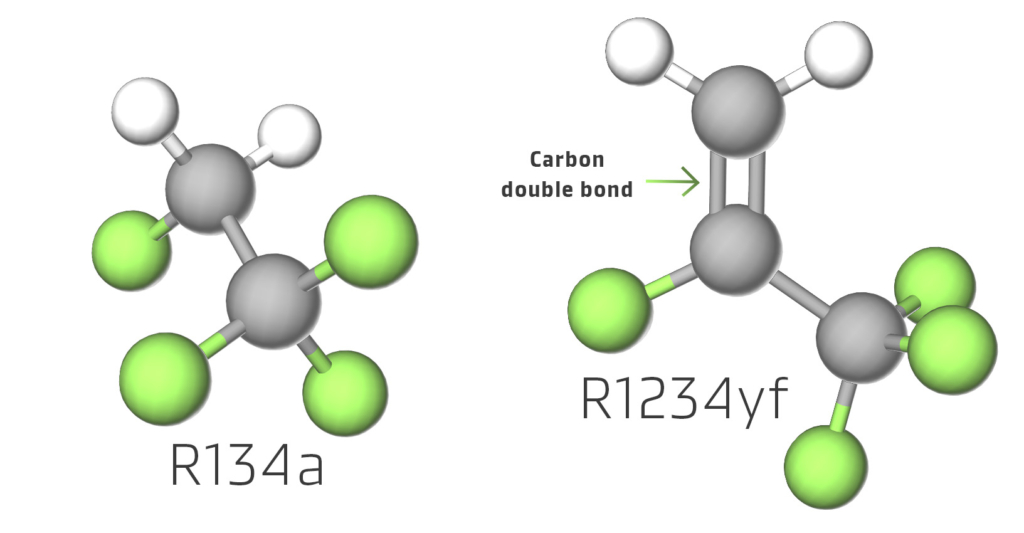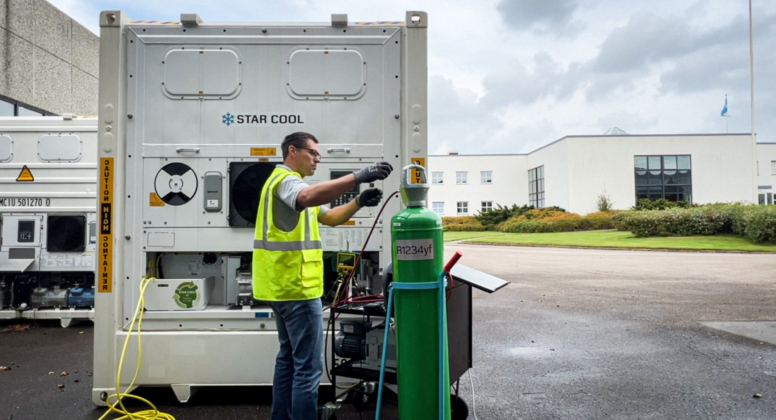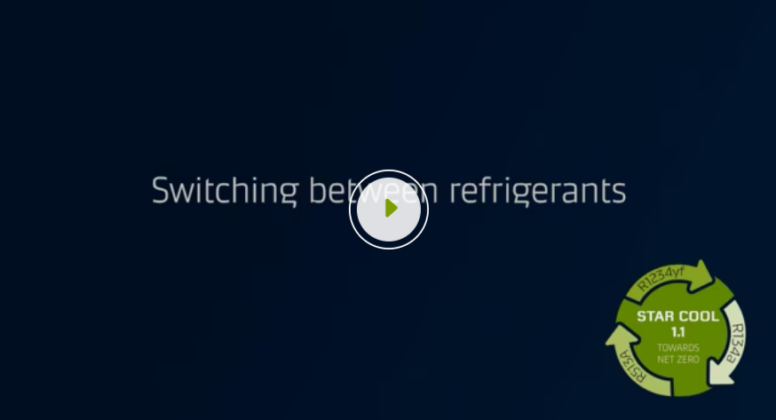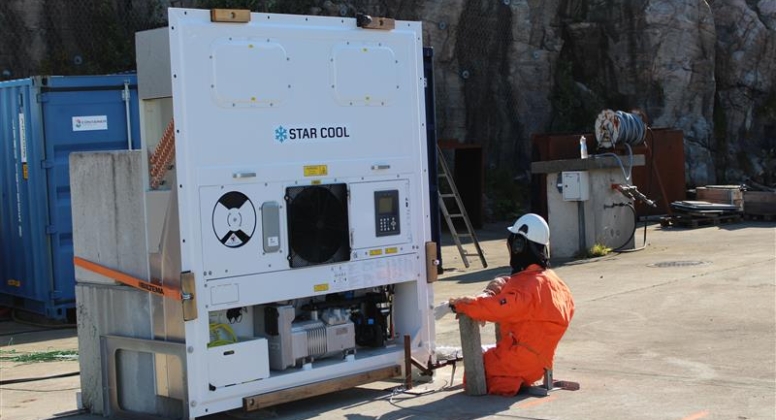R1234yf and its relevance for the reefer industry
Reefers play a crucial role in preserving the quality and safety of perishable goods during transportation. The reefer industry is growing and too is the emphasis on the environment. Here, refrigerants have become a significant topic. R134a has been the go-to choice for reefers in recent years, but now, alternative options have emerged, such as the introduction of R513A by MCI and Star Cool 6 years ago as part of our dual refrigerant strategy. Notably, R513A boasts a 56% lower Global Warming Potential (GWP) than R134a, equivalent to 4-5 tons lower equivalent carbon emissions during the average lifetime of a reefer.

R1234yf: A Sustainable Refrigerant Option
R1234yf stands out as a promising refrigerant choice for reefers due to its ultra-low Global Warming Potential (GWP) of 0.5. This low GWP is attributed to the presence of a carbon double bond in the refrigerant molecule, causing it to break down after only 12 days when released into the atmosphere. The thermo-physical properties of R1234yf closely resemble those of R134a, enabling the reuse of existing components and systems without extensive development costs and time.
Furthermore, R1234yf is a mildly flammable gas, with its flammability differing significantly from gases like propane or butane. This characteristic reduces the probability of ignition and fire accidents, while also minimizing the severity of any potential fire due to its lower heat of combustion. The automotive industry has already embraced R1234yf over CO2 in air-conditioning systems, emphasizing its safety and availability as an ultra-low refrigerant option.
The combination of low power consumption and reduced greenhouse gas emissions makes R1234yf charged reefers the most climate friendly choice for the refrigerated container industry. This viewpoint was widely shared by Reefer Original Equipment Manufacturers (OEMs) during the Container Owner Association meeting in Antwerp, 2023.

Understanding PFAS
PFAS, or per- and polyfluoroalkyl substances, is a broad term encompassing a group of chemical substances that contain at least one fully fluorinated methyl or methylene carbon atom. While there are over 10,000 substances falling under this definition, it is important to note that not all of them are toxic or persistent in nature. The European Chemical Agency (ECHA) has proposed a restriction on the entire group of PFAS substances due to the presence of some toxic and persistent members to prevent regrettable substitutions.
The Relationship Between R1234yf and PFAS
Although R1234yf itself is not persistent or toxic, its structure classifies it as a PFAS. However, when R1234yf decomposes in the atmosphere, it transforms into Trifluoroacetic acid (TFA). TFA is considered a PFAS compound and exhibits persistence. When TFA comes into contact with soil or surface water, it forms salts with minerals like Sodium and Calcium, behaving similarly to other mineral salts. While TFA is soluble in water and can accumulate in salt lakes, beaches, and oceans, it is not highly toxic and poses minimal risk to human health, as stated by UNEP.[1]
It is worth noting that TFA is naturally produced by undersea volcanic activities, and a significant amount of it found in the ocean can be attributed to this natural source. In a bi-partisan effort, the US Senate is currently drafting a bill to provide a consistent and practical definition of PFAS compounds, specifically excluding refrigerants and their decomposition product TFA and only focusing on the proven toxic and problematic substances, that can easily migrate into the environment.
A Safe and Sustainable Reefer Refrigerant
R1234yf offers a compelling solution as a refrigerant for reefers, providing a balance between environmental sustainability and safety. Its low GWP, similar thermo-physical properties to R134a, and reduced flammability make it an ideal choice for the refrigerated container industry. Additionally, while R1234yf is classified as a PFAS substance due to its structure, its decomposition product TFA is not highly toxic and is naturally occurring. As regulations continue to evolve, it is crucial to understand the nuances surrounding PFAS substances and their relation to refrigerants like R1234yf.
[1] U. N. E. Programme, “Summary Update 2021 for Policymakers,” 17 September 2021. [Online]. Available: https://ozone.unep.org/sites/default/files/assessment_panels/EEAP-summary-update-2021-for-policymakers.pdf. [Accessed 13 06 2023].
Other sources:
UNEP, “Sources, Fates, Toxicity and Risks of Trifluoroacetic acid and its salts: Relevance to substances regulated under the Montreal and Kyoto Protocols,” Nairobi, 2016.
See page 5 of https://www.epa.gov/system/files/documents/2021-10/pfas-natl-test-strategy.pdf
https://www.epw.senate.gov/public/index.cfm/2023/6/stakeholder-comment-on-draft-pfas-legislation
See Section 2, paragraph 4 for definition of Perfluoroalkyl substance https://www.epw.senate.gov/public/_cache/files/e/1/e198c8f6-be9c-4187-ba2a-6b54ba19aad5/F8428DFD5E4D5EC2DF0A0EA6C31827EE.maz23283.pdf


